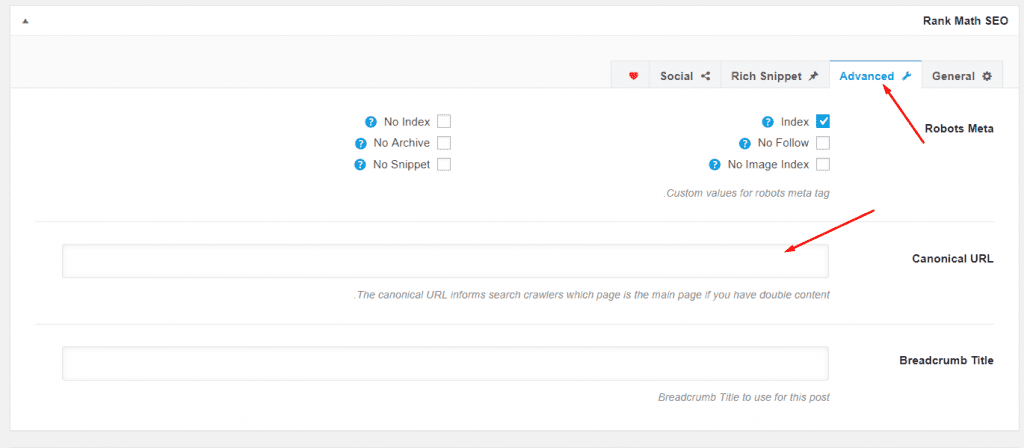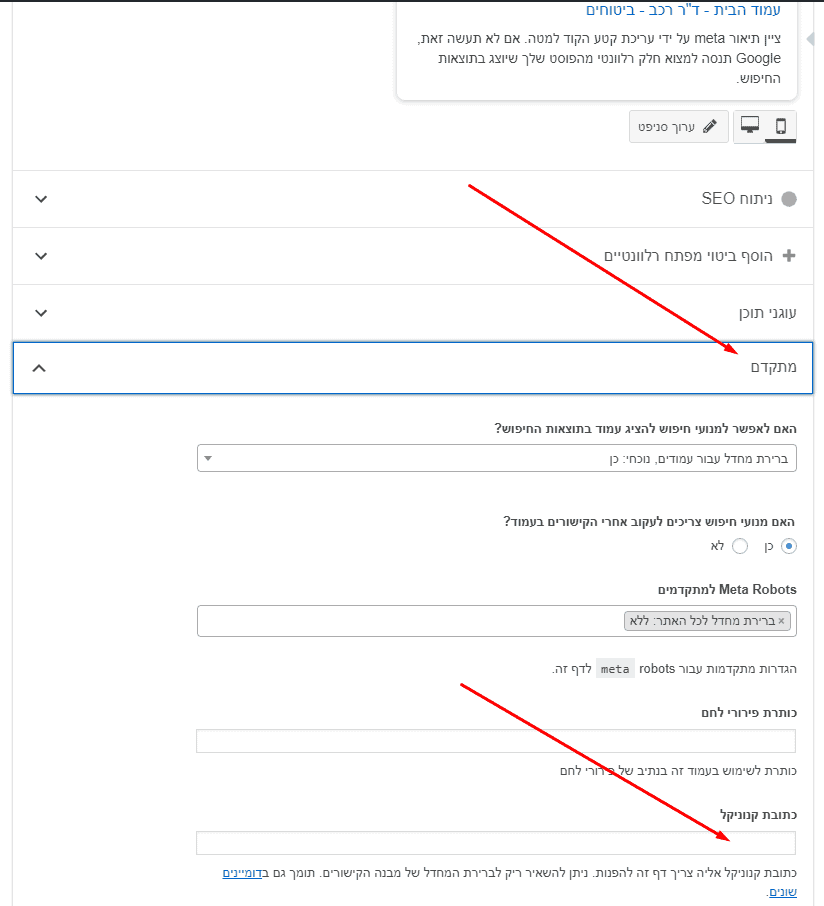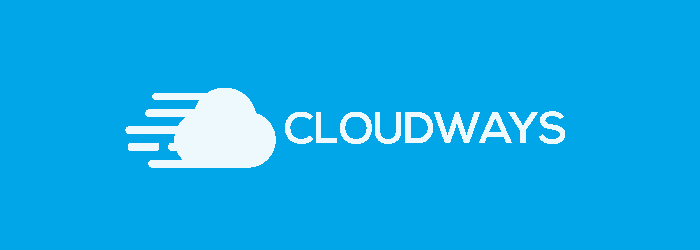The various Content Management System (CMS) of modern websites significantly facilitate website managers to submit and update content on the website. In addition, these systems enable cataloging of the content and execution of various sorting to arrange items in a way that is easy for the user. However, these important features also have a negative effect: In many cases, duplicate or similar content pages are created, which can cause problems with searching and indexing the pages in the Google search engine. This is where the Canonical Tag comes to save us.
How to set a Canonical Tag manually, through Yoast or using RankMath
A Canonical Tag will be set in the Header section of the relevant page. This is a line of html code, whose function is to signal to the search engines who is, in fact, the preferred source page for searching, with the same or similar content as defined in the tag.
Here’s a canonical code for example:
<link rel=”canonical” href=”https://example.com/blablaorg/” />
pay attention:
If we have integrated this tag on a page on a site called “blabla”, which contains content very similar to the content on the “blablaorg” page, and we would very much like Google to bother and index only the source page, which is “blablaorg”, then we should of course make that referral in the page header.
If you use the RankMath extension, here you define the address to which you want to redirect the page in a canonical way:

And if you use Yoast, it’s here:

When do we want to make a Canonical Tag definition?
There are a number of instances where it is highly recommended to define a Canonical Tag, to allow Google to understand who the original and main content page that should be indexed.
Prevent indexing of pages with content duplicated from another site
In the case of an important article that we choose to publish on multiple sites we own, when use extensive quotes from other articles, or even when viewing information gathered from various sources on the web – we want to use a Canonical Tag to prevent Google from suspecting that it is a copy and copyright infringement.
Prevent indexing of product pages with different parameters
Many commercial sites use the same descriptive content for products, with minor changes such as color, size, or sort of product set displayed on the page. In many cases, each such page generates a different url, though it describes remarkably similar content. Using a Canonical Tag can help Google choose the only version that will index it. here’s a site I used exactly for this topic.
Prevent indexing page in print view
In many cases, page printing is possible on the site, using a different url for print view. A Canonical Tag can come to help in this case as well.
What’s the difference between a Canonical Tag and 301 redirects?
The average person can ask himself why it is needed to use the Canonical Tag if he has the 301 redirects tool available. Well, these are two completely different solutions, for completely different needs.
A Canonical Tag serves as a recommendation for the search engine to choose which pages to index and which indexes to avoid. We use a Canonical Tag when all the different page versions displaying the content are needed. That is, we want to allow the user to view content even when sorted in ascending order and also hen sorted in descending order. Content must be available in both configurations, but indexed – once only.
The 301 redirect, on the other hand, is used to signal to Google that a particular webpage is no longer relevant, and instead we want to show the user a page managed at a different address.





